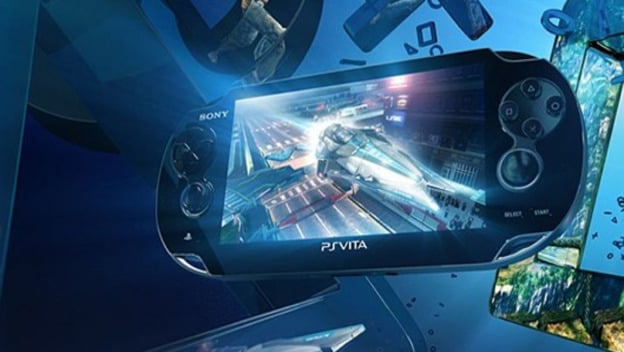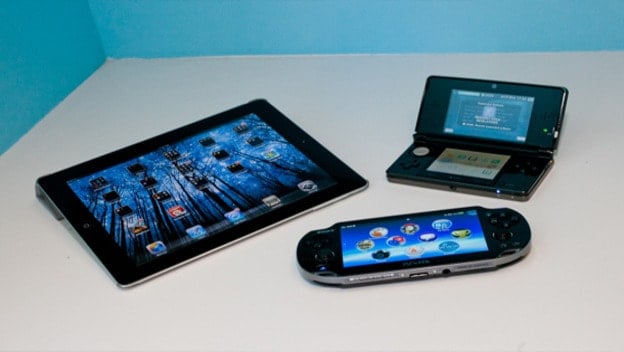2013 is picking up speed now that January is finally over, and the topic of new consoles is hotter than ever. Developer kits and specification leaks about the PlayStation 4 have kept our ears perked for months, and Microsoft’s relative silence about their next Xbox is just as enticing—which is to say nothing of the Wii U’s recent launch or the once-fabled, now-confirmed Steam Box. But even in this rumor-and-hype industry, the literal little guys of the gaming world are profiting like never before.
From Nintendo’s DS line, to Sony’s Vita, or even the Wii U’s innovative controller design, handheld gaming is definitely not the minority it was back in the Game Boy’s days. (I’m just waiting to hear about Microsoft’s XPalm 180.) Even with how powerful consoles are becoming, sales records will show that we love these things to bits. We live in the mobile age, and sometimes don’t want to be glued to a chair for our gaming needs. A chunk of their popularity can also be attributed to the success of the swarm of tablets and smartphones that are dominating our hands and free time—we love our shiny new time-killers, after all—but there are plenty of less depressing reasons why handhelds are more than holding their own in today’s gaming market.
There are some pretty obvious advantages right off the bat—benefits that any owner will vouch for. They’re small and convenient, they’ve got their own exclusive franchises, and they usually end up getting some unique content on multi-platform release. But above all, they’re portable. These are all credible selling points, but there’s nothing too special about them; they basically just define handheld gaming as a whole, and consoles can match them point for point. Now let’s take a look at where handhelds get a serious step up on the bulkier competition.
First and foremost: They’re less expensive. Lower prices will get attention in any business, and it can become pretty difficult to cough up three to four hundred bucks for a souped-up box o’ gaming when these things are just glaring at you with devilishly discounted price tags. The actual devices typically start in the low 200’s, but are always supported with some price-slashing bundles. The games themselves are just as impressive at, on average, a full twenty bucks cheaper than their console counterparts, and this makes handheld titles that much more enticing.
But “cheaper is better” isn’t exactly breaking new ground, especially in an entertainment industry. And lucky for handhelds, the two most popular consoles—the PlayStation 3 and Xbox 360—aren’t either. Great as they are, our current generation of consoles is starting to show its age. Well, guess who’s ready to flaunt their new features in this innovation standstill? You guessed it: The 3DS XL and PS Vita.
Being pocket-friendly unlocks a lot of potential for any device, and handhelds have taken full advantage of this fact. And we’re not just talking superfluous bells and whistles here; there’s some serious innovation going on in the handheld market. The 3DS XL comes packed with considerably larger screens, 3d visuals that actually work, an improved online store, and a more powerful camera. That’s a serious overhaul from the original 3DS, but the entire DS line will stand out as uniquely tuned handhelds thanks to their split-screen design (which was so successful that Nintendo’s newest console was heavily influenced by it) and stylus-controlled gameplay.

Then we have the newest and most powerful handheld, the PS Vita. Sony has always put out impressive hardware, and their handheld is no exception. With games like Sine Mora, Uncharted: Golden Abyss, and Gravity Rush blurring the line between handheld and console quality, it’s getting harder and harder to call one superior. But the Vita’s greatest triumph is its cross-platform compatibility with the PlayStation 3. The idea of sharing purchases between consoles of the same developer is new to the industry, and it’s absolutely brilliant. It not only encourages owners of one device to pick up the other, but ensures that gamers will get plenty of play out of new releases. Add that to greatly refined Internet browsing and streaming, a dual-analog control layout, and expanding backwards compatibility, and you’ve got one hell of a handheld.
Boasting lower prices, innovative controls, tablet-rivaling Internet functionality, and unique franchises, it’s no wonder portable gaming is still going strong today. I’m as excited for the next generation of consoles as the next guy, but I definitely won’t be bored anytime soon with these things floating around.
| By Austin Wood Freelance Writer Date: February 26, 2013 |
